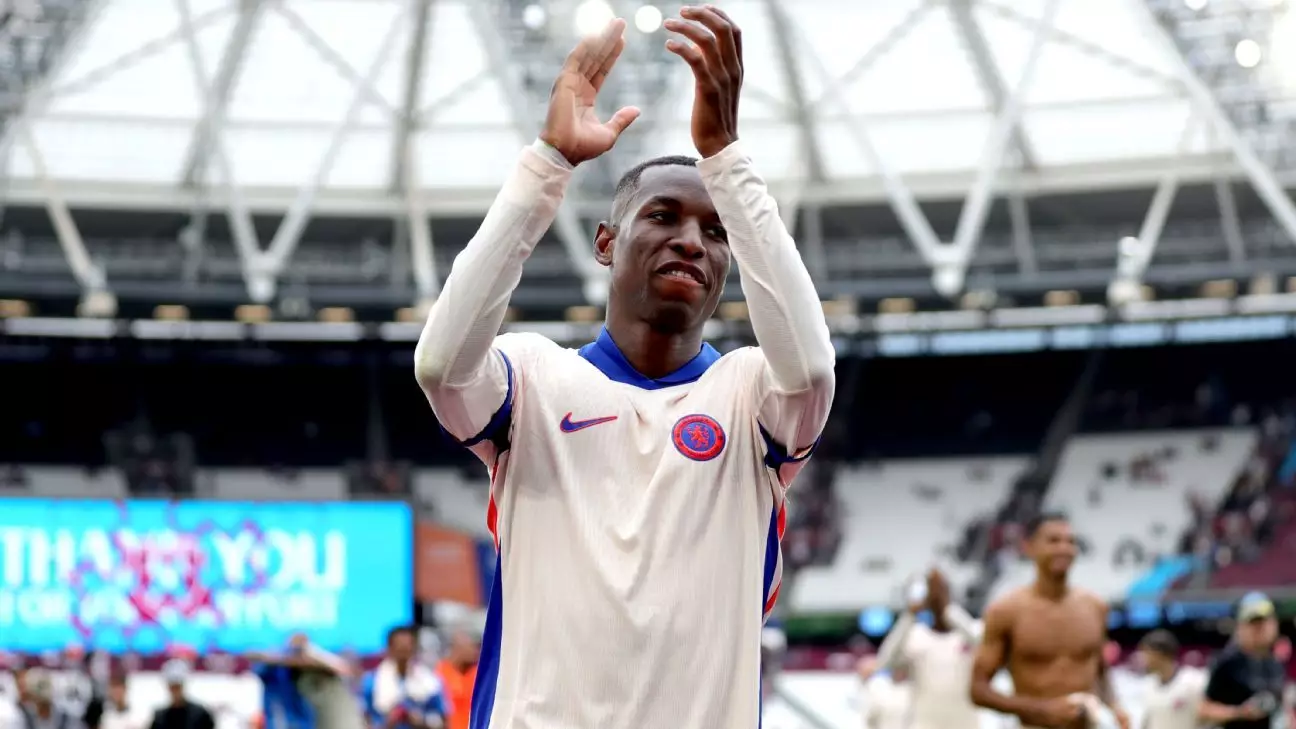The Premier League, renowned for its unpredictable nature, is witnessing a familiar scenario as the season unfolds. Just five matches into the new campaign, the early leaders echo the narrative of the previous year. Manchester City, the reigning champions, once again find themselves at the top of the table, accompanied by Arsenal, Liverpool, and Aston Villa—teams that dominated the prior season’s final standings. While a consistent pattern seems promising for fans of these clubs, it’s essential to delve deeper into the performance metrics and emerging narratives that could suggest the table is far from settled.
Assessing Early Trends in Performance
While direct comparison of standings from one season to another often provides a false sense of security, early insights from the current campaigns reveal critical trends in team performance. As we approach the tenth match of the season—a pivotal point where statistical trends tend to stabilize—it remains fruitful to scrutinize early performances.
In the realm of football, the aphorism “champions find a way to win” bodes true. After all, accumulating points, even from lackluster performances, is paramount in the relentless race for the title. However, this cliché often ignores the fundamental reality: consistently poor performances can lead to eventual failure. This scrutiny invites a closer examination of clubs like Arsenal, whose start has been riddled with questions despite their undefeated status.
Despite occupying a high position in the table, Arsenal’s performance metrics evoke skepticism. The team shares a concerning negative expected goals (xG) differential, hinting at a stark contrast against their leading rivals. Remarkably, Arsenal has not showcased dominance in any match, with no recorded xG differential of one or more. This raises questions about the sustainability of their results. However, the team has managed to secure valuable points, including a 2-2 draw with Manchester City and securing victory in the North London derby against Tottenham.
The critical inquiry surrounding Arsenal centers on whether their current standing is a reflection of underlying quality or merely circumstantial success. Key players like Declan Rice and Martin Ødegaard have missed significant portions of the season, complicating any analysis of Arsenal’s true potential. Against this backdrop, the club’s ability to secure points despite these challenges emerges as a remarkable feat.
An examination of match performances reveals that Arsenal’s achievements may have been facilitated by sheer circumstance rather than superior execution. While they’ve accrued 11 points, countering expectations against formidable opponents, consistent patterns of poor performances—particularly during critical match phases—raise red flags about their long-term viability in the title race. If Arsenal aspires to make a serious bid for the championship, their squad must capitalize on these fledgling victories and transform them into commanding performances.
Conversely, Liverpool’s narrative oscillates between unexpected efficiency and lingering questions about squad depth. Despite missing key defensive signings in attack, Liverpool’s defense has been notably solid, conceding just one goal across five league matches. Central to this defensive fortitude is Gravenberch, whose energy and dynamism in midfield have sparked discussions about his potential long-term impact on the team.
Gravenberch’s statistics merit admiration, with impressive numbers of ball recoveries and contributions to overall team defense. Against tougher opponents, including Manchester United and AC Milan, his performances have only solidified his burgeoning reputation as a potential game-changer. However, the question looms as to whether he can sustain such performances through the rigorous demands of both the Premier League and Champions League.
The Emergence of New Talent: A Villa Perspective
Another story gaining traction is that of Aston Villa’s Duran, a young striker whose impact off the bench has been nothing short of scintillating. Scoring four goals without a single start emphasizes both potential for growth and the challenges that accompany such an explosive introduction to the season. While statistical evaluations show promise, the caveat of performing as a substitute suggests a discrepancy that may not translate to consistent starting minutes.
As Villa grapples with squad depth amidst European commitments, the possibility of utilizing Duran alongside established striker Ollie Watkins becomes tantalizing. Yet, projecting his success remains contingent upon his ability to execute similar performances under increased pressure that starting roles bring.
As the Premier League season progresses, each club’s ambitions remain tethered to their early form and inherent challenges. While Manchester City continues to assert their dominance, clubs like Liverpool and Arsenal face a balancing act between current successes and longer-term sustainability in performance. Emerging talents like Gravenberch and Duran will play pivotal roles in shaping their respective teams’ futures.
With only five matches completed, it’s crucial to approach these discussions with a sophisticated understanding of football analytics. Patterns observed in the opening weeks must be handled with caution, as the league’s unpredictable nature can yield surprising twists. As we move closer to the critical tenth match, the stage is set not only for established stars to shine but for new narratives to unfold. Only time will reveal how these early trends will influence the thrilling spectacle we’ve come to expect from the Premier League.

Leave a Reply